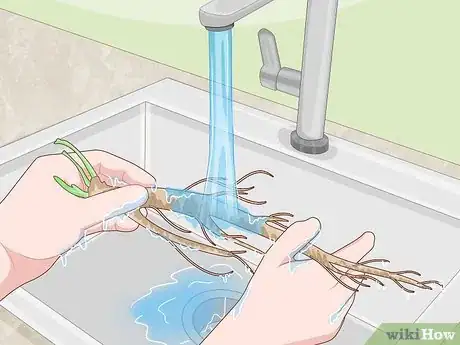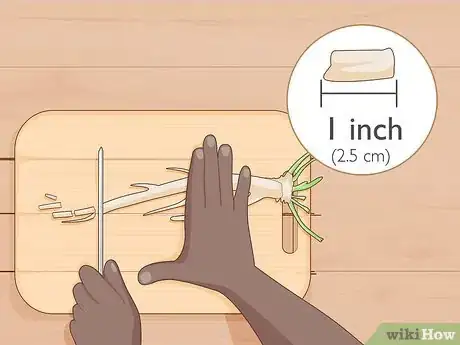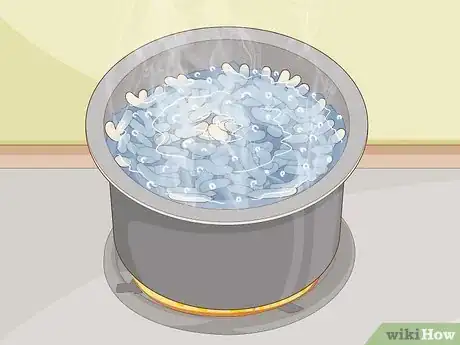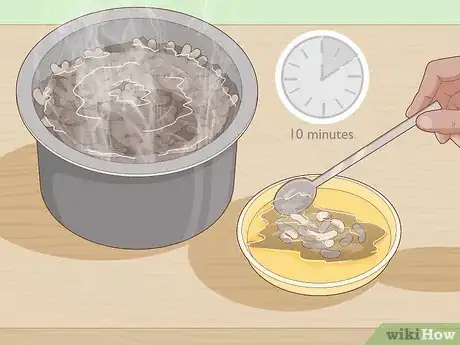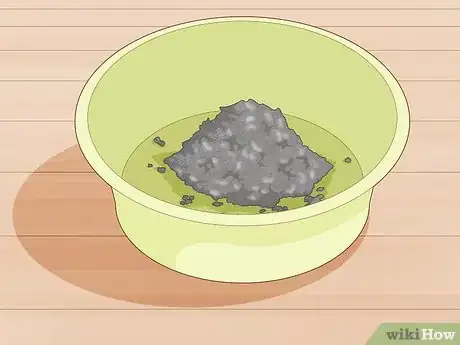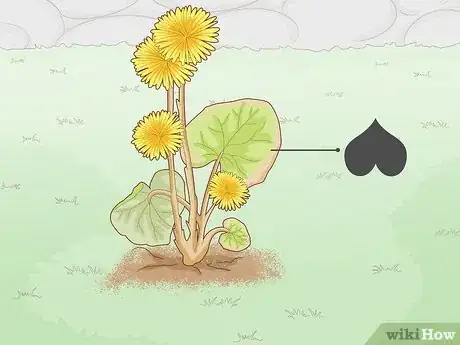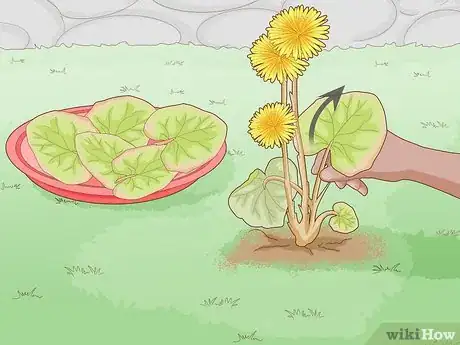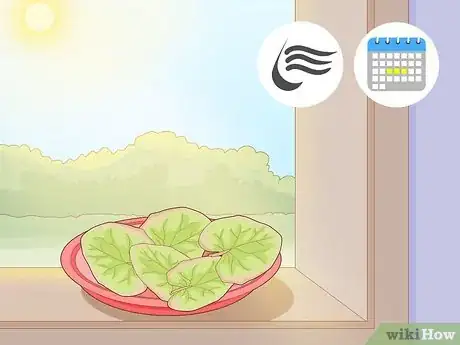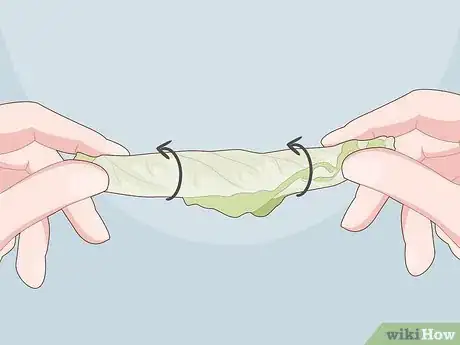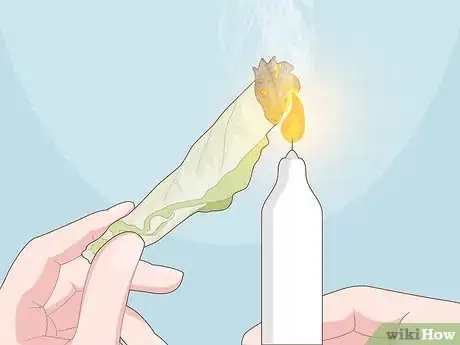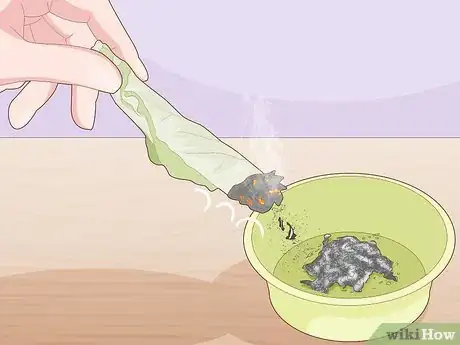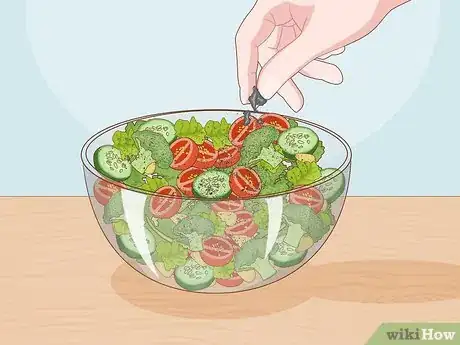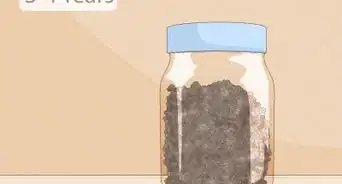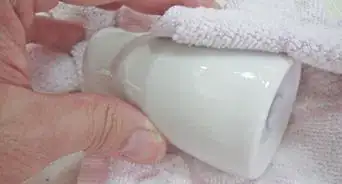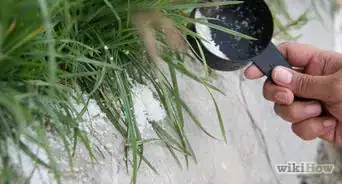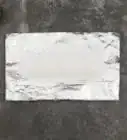This article was co-authored by wikiHow Staff. Our trained team of editors and researchers validate articles for accuracy and comprehensiveness. wikiHow's Content Management Team carefully monitors the work from our editorial staff to ensure that each article is backed by trusted research and meets our high quality standards.
This article has been viewed 21,278 times.
Learn more...
Although you may not think of it often, salt is an important nutrient that your body needs to function. Low salt content can cause headaches, confusion, nausea, and muscle weakness.[1] In a survival situation, you need to find a supply of salt to keep your body functioning. If you have no other choices, you can extract salt from some plants. Boiling pieces of hickory, walnut, and pecan roots extracts nutrients like sodium from the plant. Also, burning dry coltsfoot leaves yields salt-rich ashes. Use either method in a survival situation.
Steps
Boiling Plant Roots
-
1Dig up and rinse hickory, dandelion, walnut, or pecan roots. Since plants absorb nutrients through their roots, they all tend to have some salt here. But these plants in particular store salt in their roots. Look for one or more of these plant types and use them to extract salt. Rinse them off to remove any dirt before you boil them.[2]
- Some of these roots are safe to eat raw, but they’ll taste very bitter.
- Identify hickory trees by their long leaves and bark. Identify the other leaves by the nuts growing from their branches.[3]
- Since hickory, walnut, and pecan are trees, they have thick roots. If you have a heavy shovel or pickaxe, you can break up the thick portions. Otherwise, follow the roots until they start getting thinner and easier to break.
-
2Cut the roots up into pieces 1 inch (2.5 cm) long. Use a knife or similar cutting tool to slice up the roots. They don’t have to be diced completely, but cut them into sections of 1 inch (2.5 cm) in length.[4]
- Work on a flat surface so you don’t lose any roots after you cut them up.
- Cut as much as you can fit into the pot you boil the water in. There isn't a huge amount of salt in the plants, so you'll need a lot of root to get a good serving.
Advertisement -
3Boil the roots in water to draw out the nutrients. Cover the bottom of a pan or pot with 1 inch (2.5 cm) of water and place it over a fire. Then add the root pieces. Let the water sit until it boils.[5]
- You can do this on a stove, barbeque, or over a campfire.
- Always be careful when using flames outdoors. Don’t put hot objects down on dry surfaces, or you risk starting a fire.
-
4Remove the roots when the water starts turning black. As the nutrients come out of the roots, the water changes color. When it turns dark brown or black, then all of the nutrients have been extracted. Use a long spoon to remove all the root pieces.[6]
- The time this takes depends on the root size. Smaller roots may only take 8-10 minutes. Larger ones take over 10 minutes. Monitor the water to see when the best time to remove the roots is.
- Be careful removing the root pieces. Remember that the water is boiling. Don’t touch the pot or water directly.
-
5Continue boiling until all the water evaporates. Keep the pot over the fire and let the water continue boiling. Leave it undisturbed until all the water evaporates.[7]
- Depending on how much water you used, it could take 20 minutes or more for it to evaporate completely.
-
6Use the black substance left over as a salt substitute. When the water evaporates, a black tar-like substance is left behind. This is the extracted nutrients, including the salt. Use this as a salt replacement to get your necessary sodium serving. Sprinkle it on your food or eat it plain, if you prefer.[8]
- The substance is not harmful if you eat it plain, but it may taste bitter. Mix it with food to avoid the bitterness.
- This substance may start rotting in a few days, so use it quickly.
Burning Coltsfoot Leaves
-
1Identify coltsfoot plants by their yellow flowers and hoof-shaped leaves. Coltsfoot is easy to spot because it produces bright yellow flowers that look like dandelions. Their leaves are hoof-shaped (which is where it gets its name), and have a smooth, waxy surface. Coltsfoot grows almost worldwide, so you can probably find it in most wooded areas. It grows especially well in damaged, depleted soil, so search along roadsides, in ditches, and on exposed slopes.
- Leaves from this plant are particularly high in salt.
- If there are dandelions and coltsfoot in the same area, distinguish between the plants by the coltsfoot’s distinctive leaves. Also, the flowers on coltsfoot have slightly red tips, unlike dandelions which are all yellow.
- Coltsfoot only produces flowers in the spring, so if no flowers are present, look for the leaves.
-
2Pick as many coltsfoot leaves as you can carry. Each leaf will only produce a small amount of salt, so use as much as you can. When you locate coltsfoot plants, tear off the leaves. If flowers are blooming, leave them in place. Don't pull up the whole plant.[9]
- Coltsfoot usually grows in clusters, so there should be plenty of leaves around to use.
-
3Dry out the leaves by leaving them in the sun. The leaves won’t burn properly if they’re fresh. Leave them out in the sun in a place they won’t blow away. Then leave them undisturbed until they turn a dull color and feel brittle to the touch.[10]
- This process may take up to 3 days.
- You can make the process faster by finding leaves that are already dried out. Look around the coltsfoot plants for leaves that have fallen off and started drying out.
-
4Roll the leaves into a bundle. Take the dried leaves and roll them up. Don’t use any string or twine to keep them together or these ashes will also end up in your salt.[11]
- The leaves will be brittle if they’re very dry, so roll carefully. Don’t lose big chunks of the leaves.
-
5Light the leaves on fire at one end. Grip the bundle at one end and hold it horizontally. Light the other end with a match or lighter. Let the flame slowly progress down the leaf.[12]
- Blow on the flame lightly to feed oxygen into the fire.
-
6Tap the ashes into a container as the flame progresses. Act as if the leaves are a cigarette. As the flame moves down and ashes appear, tap them into a bowl or plate to collect them.[13]
- Do this somewhere you’re shielded from the wind. A good gust could scatter all your ashes and you’ll have to start all over again.
-
7Use the ashes as a salt replacement. Once you’ve burned all the coltsfoot leaves, you’re left with a pile of sodium-rich ashes. Add these ashes to your food to get a serving of salt.[14]
- Note that the coltsfoot ashes don’t taste especially salty. They aren’t meant to add salt flavoring to food, but rather to provide you with a source of sodium in the wild.
- Since this substance is burned, you can store it in a container for several weeks.
Things You'll Need
Boiling Plant Roots
- Hickory, dandelion, pecan, or walnut root
- Knife
- Pot or pan
- Water
- Spoon
- Barbecue or campfire
Burning Coltsfoot Leaves
- Coltsfoot leaves
- Match or lighter
- Container
Warnings
- Don’t eat any plants that you can’t identify. Not all plants are edible and some could make you seriously sick.⧼thumbs_response⧽
- None of these methods are meant to flavor your food. They provide salt for survival situations.⧼thumbs_response⧽
References
- ↑ https://www.mayoclinic.org/diseases-conditions/hyponatremia/symptoms-causes/syc-20373711
- ↑ https://thegrownetwork.com/finding-sodium-wilderness-survival/
- ↑ https://www.arborday.org/trees/whattree/
- ↑ https://thegrownetwork.com/finding-sodium-wilderness-survival/
- ↑ https://practicalselfreliance.com/foraging-salt-inland/
- ↑ https://thegrownetwork.com/finding-sodium-wilderness-survival/
- ↑ https://thegrownetwork.com/finding-sodium-wilderness-survival/
- ↑ https://practicalselfreliance.com/foraging-salt-inland/
- ↑ https://practicalselfreliance.com/coltsfoot-salt/
